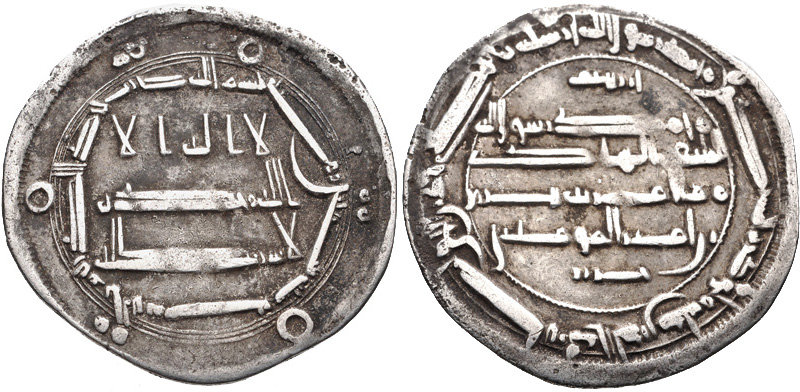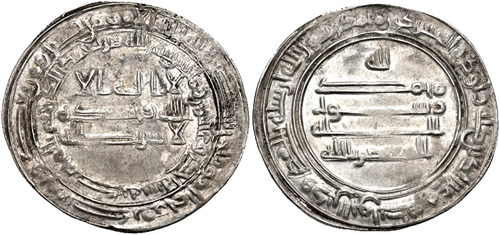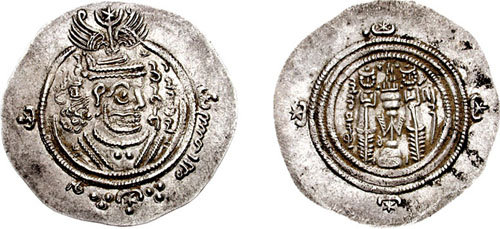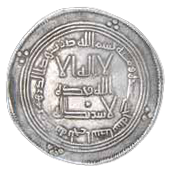Dirham on:
[Wikipedia]
[Google]
[Amazon]








 The dirham, dirhem or dirhm ( ar, درهم) is a silver unit of currency historically and currently used by several
The dirham, dirhem or dirhm ( ar, درهم) is a silver unit of currency historically and currently used by several
 The word "dirham" ultimately comes from ''
The word "dirham" ultimately comes from ''
s.v. 'dirhem'
/ref> The Greek-speaking







 The dirham, dirhem or dirhm ( ar, درهم) is a silver unit of currency historically and currently used by several
The dirham, dirhem or dirhm ( ar, درهم) is a silver unit of currency historically and currently used by several Arab
The Arabs (singular: Arab; singular ar, عَرَبِيٌّ, DIN 31635: , , plural ar, عَرَب, DIN 31635, DIN 31635: , Arabic pronunciation: ), also known as the Arab people, are an ethnic group mainly inhabiting the Arab world in Wester ...
and Arab influenced states. The term has also been used as a related unit of mass.
Unit of mass
The dirham was a unit of weight used across North Africa, the Middle East, Persia and Ifat; later known as Adal, with varying values. The value of Islamic dirham was 14 qirat, 10 dirham = 7 mithqal, in Islamic law (2.975 gm of silver). In the late Ottoman Empire ( ota, درهم), the standard dirham was 3.207 g; 400 dirhem equal one oka. The Ottoman dirham was based on the Sasanian drachm (inMiddle Persian
Middle Persian or Pahlavi, also known by its endonym Pārsīk or Pārsīg () in its later form, is a Western Middle Iranian language which became the literary language of the Sasanian Empire. For some time after the Sasanian collapse, Middle Per ...
: ''drahm''), which was itself based on the Roman dram/drachm.
In Egypt
Egypt ( ar, مصر , ), officially the Arab Republic of Egypt, is a transcontinental country spanning the northeast corner of Africa and southwest corner of Asia via a land bridge formed by the Sinai Peninsula. It is bordered by the Med ...
in 1895, it was equivalent to 47.661 troy grains (3.088 g).
There is currently a movement within the Islamic world to revive the dirham as a unit of mass for measuring silver, although the exact value is disputed (either 3 or 2.975 grams).
History
 The word "dirham" ultimately comes from ''
The word "dirham" ultimately comes from ''drachma
The drachma ( el, δραχμή , ; pl. ''drachmae'' or ''drachmas'') was the currency used in Greece during several periods in its history:
# An ancient Greek currency unit issued by many Greek city states during a period of ten centuries, f ...
'' (δραχμή), the Greek coin.''Oxford English Dictionary
The ''Oxford English Dictionary'' (''OED'') is the first and foundational historical dictionary of the English language, published by Oxford University Press (OUP). It traces the historical development of the English language, providing a com ...
'', 1st editions.v. 'dirhem'
/ref> The Greek-speaking
Byzantine Empire
The Byzantine Empire, also referred to as the Eastern Roman Empire or Byzantium, was the continuation of the Roman Empire primarily in its eastern provinces during Late Antiquity and the Middle Ages, when its capital city was Constantin ...
controlled the Levant
The Levant () is an approximation, approximate historical geography, historical geographical term referring to a large area in the Eastern Mediterranean region of Western Asia. In its narrowest sense, which is in use today in archaeology an ...
and traded with Arabia
The Arabian Peninsula, (; ar, شِبْهُ الْجَزِيرَةِ الْعَرَبِيَّة, , "Arabian Peninsula" or , , "Island of the Arabs") or Arabia, is a peninsula of Western Asia, situated northeast of Africa on the Arabian Plate. ...
, circulating the coin there in pre-Islamic times and afterward. It was this currency which was initially adopted as a Persian word (Middle Persian
Middle Persian or Pahlavi, also known by its endonym Pārsīk or Pārsīg () in its later form, is a Western Middle Iranian language which became the literary language of the Sasanian Empire. For some time after the Sasanian collapse, Middle Per ...
''drahm'' or ''dram''); then near the end of the 7th century the coin became an Islamic currency bearing the name of the sovereign and a religious verse. The "dirham" was the coin of the Persians. The Arabs introduced their own coins.
The Islamic dirham was 8 daniq. The dirham was struck in many Mediterranean countries, including Al-Andalus
Al-Andalus translit. ; an, al-Andalus; ast, al-Ándalus; eu, al-Andalus; ber, ⴰⵏⴷⴰⵍⵓⵙ, label= Berber, translit=Andalus; ca, al-Àndalus; gl, al-Andalus; oc, Al Andalús; pt, al-Ândalus; es, al-Ándalus () was the Mus ...
(Moorish
The term Moor, derived from the ancient Mauri, is an exonym first used by Christian Europeans to designate the Muslim inhabitants of the Maghreb, the Iberian Peninsula, Sicily and Malta during the Middle Ages.
Moors are not a distinct or ...
Spain
, image_flag = Bandera de España.svg
, image_coat = Escudo de España (mazonado).svg
, national_motto = '' Plus ultra'' ( Latin)(English: "Further Beyond")
, national_anthem = (English: "Royal March")
, ...
) and the Byzantine Empire
The Byzantine Empire, also referred to as the Eastern Roman Empire or Byzantium, was the continuation of the Roman Empire primarily in its eastern provinces during Late Antiquity and the Middle Ages, when its capital city was Constantin ...
('' miliaresion''), and could be used as currency in Europe
Europe is a large peninsula conventionally considered a continent in its own right because of its great physical size and the weight of its history and traditions. Europe is also considered a subcontinent of Eurasia and it is located enti ...
between the 10th and 12th centuries, notably in areas with Viking
Vikings ; non, víkingr is the modern name given to seafaring people originally from Scandinavia (present-day Denmark, Norway and Sweden),
who from the late 8th to the late 11th centuries raided, pirated, traded and s ...
connections, such as Viking York
Scandinavian York ( non, Jórvík) Viking Yorkshire or Norwegian York is a term used by historians for the south of Northumbria (modern-day Yorkshire) during the period of the late 9th century and first half of the 10th century, when it was do ...
and Dublin.
Dirham in Jewish orthodox law
The ''dirham'' is frequently mentioned inJewish
Jews ( he, יְהוּדִים, , ) or Jewish people are an ethnoreligious group and nation originating from the Israelites Israelite origins and kingdom: "The first act in the long drama of Jewish history is the age of the Israelites""The ...
orthodox law as a unit of weight used to measure various requirements in religious functions, such as the weight in silver specie pledged in Marriage Contracts (''Ketubbah
A ketubah (; he, כְּתוּבָּה) is a Jewish marriage contract. It is considered an integral part of a traditional Jewish marriage, and outlines the rights and responsibilities of the groom, in relation to the bride. In modern practice, ...
''), the quantity of flour requiring the separation of the dough-portion, etc. Jewish physician and philosopher, Maimonides
Musa ibn Maimon (1138–1204), commonly known as Maimonides (); la, Moses Maimonides and also referred to by the acronym Rambam ( he, רמב״ם), was a Sephardic Jewish philosopher who became one of the most prolific and influential Torah ...
, uses the Egyptian ''dirham'' to approximate the quantity of flour for dough-portion, writing in Mishnah
The Mishnah or the Mishna (; he, מִשְׁנָה, "study by repetition", from the verb ''shanah'' , or "to study and review", also "secondary") is the first major written collection of the Jewish oral traditions which is known as the Oral Tora ...
'' Eduyot'' 1:2: "And I found the rate of the dough-portion in that measurement to be approximately five-hundred and twenty ''dirhams'' of wheat flour, while all these dirhams are the Egyptian 'dirham''" This view is repeated by Maran's '' Shulhan Arukh'' (''Hil. Hallah'', Yoreh Deah § 324:3) in the name of the Tur. In Maimonides' commentary of the Mishnah (''Eduyot'' 1:2, note 18), Rabbi Yosef Qafih explains that the weight of each Egyptian ''dirham'' was approximately 3.333 grams, or what was the equivalent to 16 carob-grains which, when taken together, the minimum weight of flour requiring the separation of the dough-portion comes to approx. 1 kilo and 733 grams. Rabbi Ovadiah Yosef
Ovadia Yosef ( he, , Ovadya Yosef, ; September 24, 1920 – October 7, 2013) was an Iraqi-born Talmudic scholar, a posek, the Sephardi Chief Rabbi of Israel from 1973 to 1983, and a founder and long-time spiritual leader of Israel's ultra-Orthodo ...
, in his ''Sefer Halikhot ʿOlam'' (vol. 1, pp. 288–291), makes use of a different standard for the Egyptian ''dirham'', saying that it weighed approx. 3.0 grams, meaning the minimum requirement for separating the priest
A priest is a religious leader authorized to perform the sacred rituals of a religion, especially as a mediatory agent between humans and one or more deities. They also have the authority or power to administer religious rites; in particu ...
's portion is 1 kilo and 560 grams. Others (e.g. Rabbi Avraham Chaim Naeh
Avraham Chaim Naeh (3 May 1890 – 21 July 1954) was a Lubavitcher chassidApprobations to ''Ketzos ha-Shulchan''. and major '' posek'' ( halachic authority) active during the first half of twentieth century. He is most famous for his works ''Ketzo ...
) say the Egyptian ''dirham'' weighed approx. 3.205 grams, which total weight for the requirement of separating the dough-portion comes to 1 kilo and 666 grams. Rabbi Shelomo Qorah (Chief Rabbi of Bnei Barak) wrote that the traditional weight used in Yemen
Yemen (; ar, ٱلْيَمَن, al-Yaman), officially the Republic of Yemen,, ) is a country in Western Asia. It is situated on the southern end of the Arabian Peninsula, and borders Saudi Arabia to the north and Oman to the northeast an ...
for each ''dirham'' weighed 3.20 grams for a total of 31.5 ''dirhams'' given as the redemption of one's firstborn son ('' pidyon haben''), or 3.36 grams for the 30 ''dirhams'' required by the Shulhan Arukh (''Yoreh De'ah'' 305:1), and which in relation to the separation of the dough-portion made for a total weight of 1 kilo and 770.72 grams.
The word ''drachmon'' (), used in some translations of Maimonides' commentary of the Mishnah
The Mishnah or the Mishna (; he, מִשְׁנָה, "study by repetition", from the verb ''shanah'' , or "to study and review", also "secondary") is the first major written collection of the Jewish oral traditions which is known as the Oral Tora ...
, has in all places the same connotation as ''dirham''.''Mishnah – with a Commentary of Rabbi Moses ben Maimon'', ed. Yosef Qafih, vol. 3 – ''Seder Kodashim'', pub. Mossad Harav Kook: Jerusalem 1967, s.v. Introduction to Tractate ''Menahoth'', p. 68 (note 35) (Hebrew title: משנה עם פירוש הרמב"ם)
Modern-day currency
Currently the valid national currencies with the name ''dirham'' are: Modern currencies with the subdivision ''dirham'' or ''diram'' are: The unofficial modern gold dinar, issued and/or proposed by several states and proto-states, is also divided into dirhams.See also
* Dinar *Gold dinar
The gold dinar ( ar, ﺩﻳﻨﺎﺭ ذهبي) is an Islamic medieval gold coin first issued in AH 77 (696–697 CE) by Caliph Abd al-Malik ibn Marwan. The weight of the dinar is 1 mithqal ().
The word ''dinar'' comes from the L ...
* Fals
References
{{Islamic banking and finance Denominations (currency) Silver coins Obsolete units of measurement Ottoman units of measurement Units of mass Islamic banking Islamic banking and finance terminology